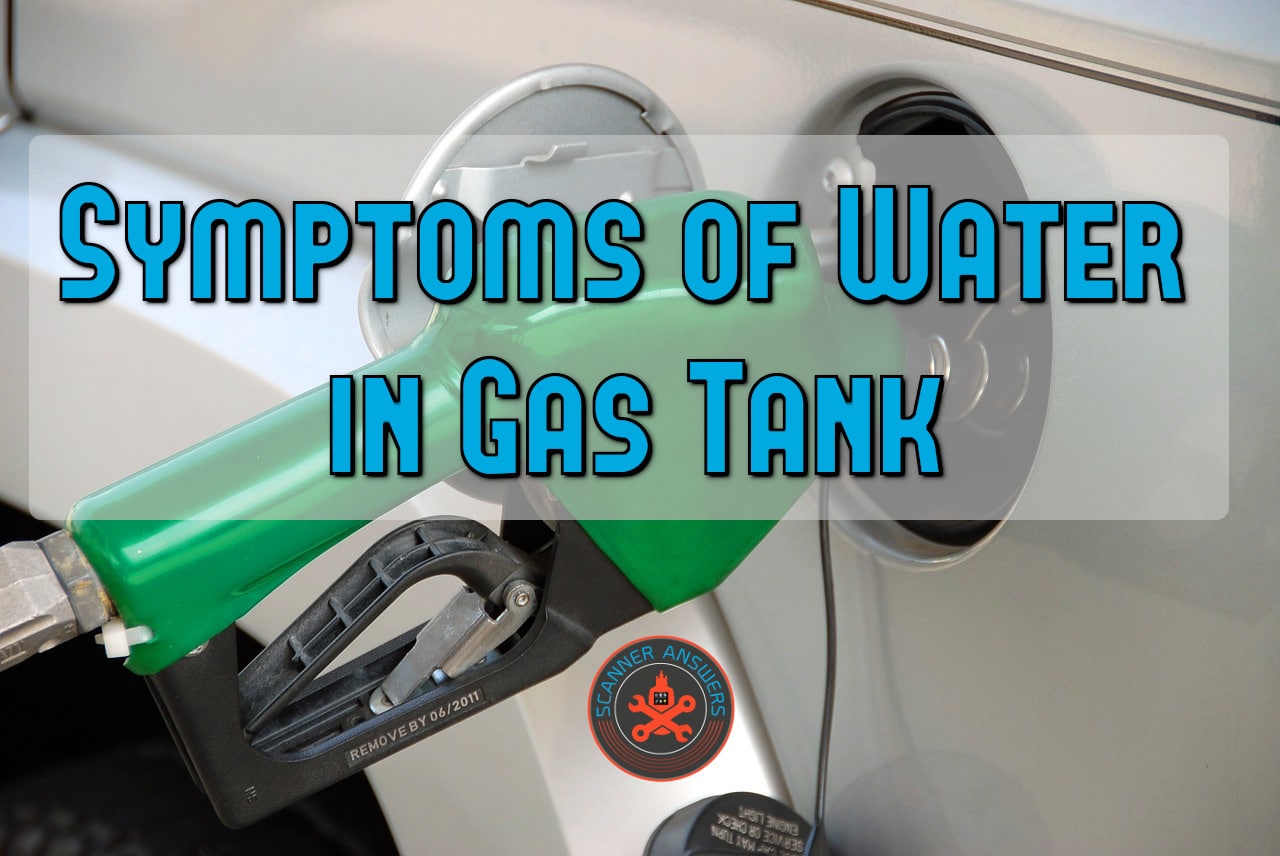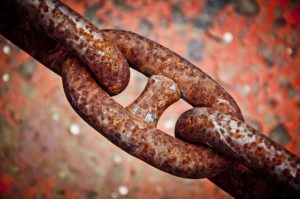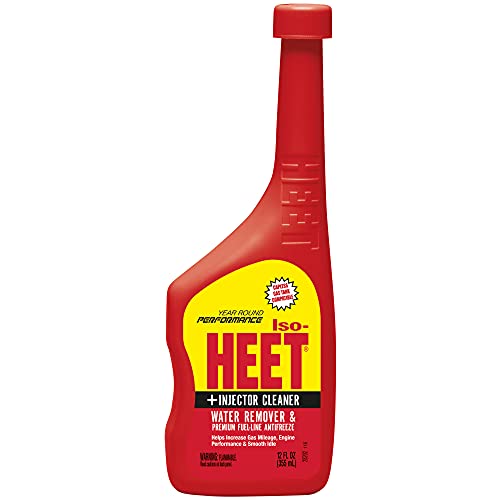
Hi there my name is Vince, and today we’re talking about water in gas tank and how to remove the water if you get it in your vehicle’s fuel tank.
What’s so bad about a little water in the tank?
The internal combustion engine is designed to only suck in water and fuel. If water happens to be present in the gas tank, it can cause performance problems and premature engine failure. This is bad news for both new and older cars.
Small amounts of water in the tank is easy to address without removing the entire gas tank and emptying the contents. In most cases, simply filling the tank with high quality gasoline and driving the car normally is enough to eliminate the problem.
But what happens if there happens to be a lot of water inside the tank? What are the most common causes and symptoms of water contamination? You might think this is an impossible scenario, but this type of thing can happen without you even knowing it.

Symptoms of Water in the Gas Tank
When water is present in the gas tank, you can expect the following symptoms when you drive the vehicle:
- Sputtering, Misfiring, or idling problems. Water is not combustible. When water enters the combustion chamber, the engine will behave erratically. This is manifested by idling problems, sputtering, or poor performance. If your vehicle was running fine until you filled up the tank, sputtering or a sudden loss of performance afterwards can be blamed on contaminated fuel. Make sure you’re running good spark plugs and your vehicle is not showing a check engine light.
- Surging or sudden increase/decrease in power. If you feel the engine losing power and suddenly surging forward as you drive, it might be caused by water mixed in the fuel. The engine will have a hard time compressing the water and will cause a noticeable loss in power. As cleaner fuel is injected, the engine regains power and will surge forward. In the absence of other sensor problems or engine faults, surging or significant loss of power might be caused by water in the gas tank, especially if the car was running fine before you filled the tank with fuel.

Rust doesn’t mix well with fuel tanks! - Rust in the gas tank. Of course, you will need to remove the entire fuel tank to determine if rust is present on the inside. Older vehicles are equipped with a steel gas tank, which will be prone to rusting if water is absorbed in the tank. If this is the case, replacing the fuel tank might be the best option to prevent contamination in the future. Check the fuel filler neck for damage. Check out preventing rust on the vehicle body.
- Poor fuel economy. This symptom can also be blamed to a poorly tuned motor or a clogged fuel filter. Burning fuel, air, and water will drastically reduce the power output of the engine. The ECU will compensate and inject more fuel. This alone will negatively affect fuel economy.
- The car refuses to start. In worst cases, the engine will refuse to start at all! If there is a pool of water on top of the piston as you crank the motor, there will be no combustion to rotate the pistons, leading to a no-start scenario.

What causes water to enter the gas tank?
Water can enter the gas tank in a variety of ways such as:
- Broken or bad fuel cap. Even just a small crack in the fuel cap is enough for small droplets of moisture to enter the gas tank. If you go to a pressurized car wash or if the vehicle is exposed to hard rain and harsh weather, the chances of water entering the gas tank will only get higher. Don’t make it a habit to remove the fuel cap unless you’re filling up with fuel. If you open the fuel cap and you don’t hear a slight hissing sound (which is the sound of de-pressurizing the fuel tank), it is time to replace the fuel cap. This is not exactly a big issue wince a fuel cap will only cost $10 to $15.
- Condensation. This is a common cause, especially in environments with large temperature variations. As the temperature changes, the air inside the tank can release moisture, leading to condensation. Over time, this moisture can accumulate and mix with the fuel.
- Faulty seals or gaskets. Seals and gaskets in the fuel system can degrade over time, allowing water to seep into the gas tank.
- Bad top fuel pump. In modern or newer cars, the fuel pump is located on top of the tank, which is located under the rear seats. If the seals on the fuel pump are worn out, it is susceptible in accumulating moisture inside the tank. The same holds true if the vehicle is exposed to deep floods. Read more about replacing a fuel pump.
- Contaminated fuel. There are times when the fuel at the pumps will be contaminated with water. The fuel will be distilled in the refineries and will be pumped through miles upon miles of pipelines before making its way to the truck to deliver the fuel. The fuel will then be pumped to the storage tank at the gasoline station and stay there until the fuel is pumped to your car’s gas tank. Georgia drivers were recently getting bad fuel from Kroger fuel stations, so this is not uncommon!
There are a lot of things that can go wrong in the process. If ground water seeps into the storage tanks under the gas station, the fuel will be contaminated by water even before it reaches your gas tank. In order to prevent this problem, you need to choose where you fill up. It is preferable to sway away from old gas stations or those located in an area where flooding is imminent.
How to Remove Water from Gas Tank
If you suspect water contamination, it’s essential to address the issue promptly to prevent further damage to the fuel system and the engine. Professional assistance may be required to drain and clean the gas tank, replace the fuel filter, and ensure that the entire fuel system is free from water.
The best way to remedy the problem is to consult a professional mechanic. As you know though, mechanics can get expensive! I always suggest people try using a fuel additive like Iso-Heet, or trying to fuel up the vehicle with high octane pump gas.
In mild cases of fuel contamination, simply filling up the tank with the highest-quality fuel is enough to solve the problem. The water will be saturated in the gasoline and will be burned off by the motor, hopefully without idling or performance issues.
Small amounts of water in the tank can also be eliminated by using a fuel additive such as Iso-HEET and Hydroburn G. Simply pour the fuel additive to a tankful of gasoline and let the product do the rest. But if there are larger amounts of water present inside the tank, additives will not be as effective as draining all the fuel and removing the gas tank.
- Selling brand of premium gas-line antifreeze
- Absorbs 5 times more water than regular gas dryers
- Removes water from fuel system
Whatever the case may be, if you can afford it, taking your vehicle to a professional mechanic may be the best choice. In the future, make sure that you only buy top tier fuel from reputable gas stations to ensure the highest possible quality.
